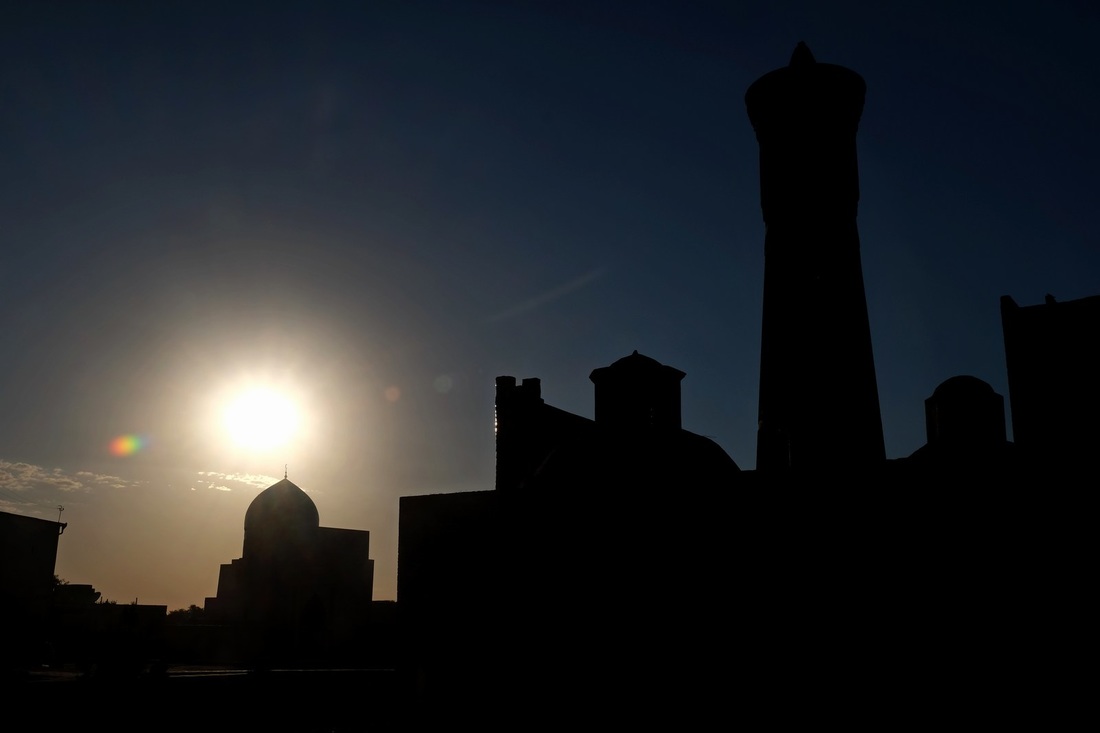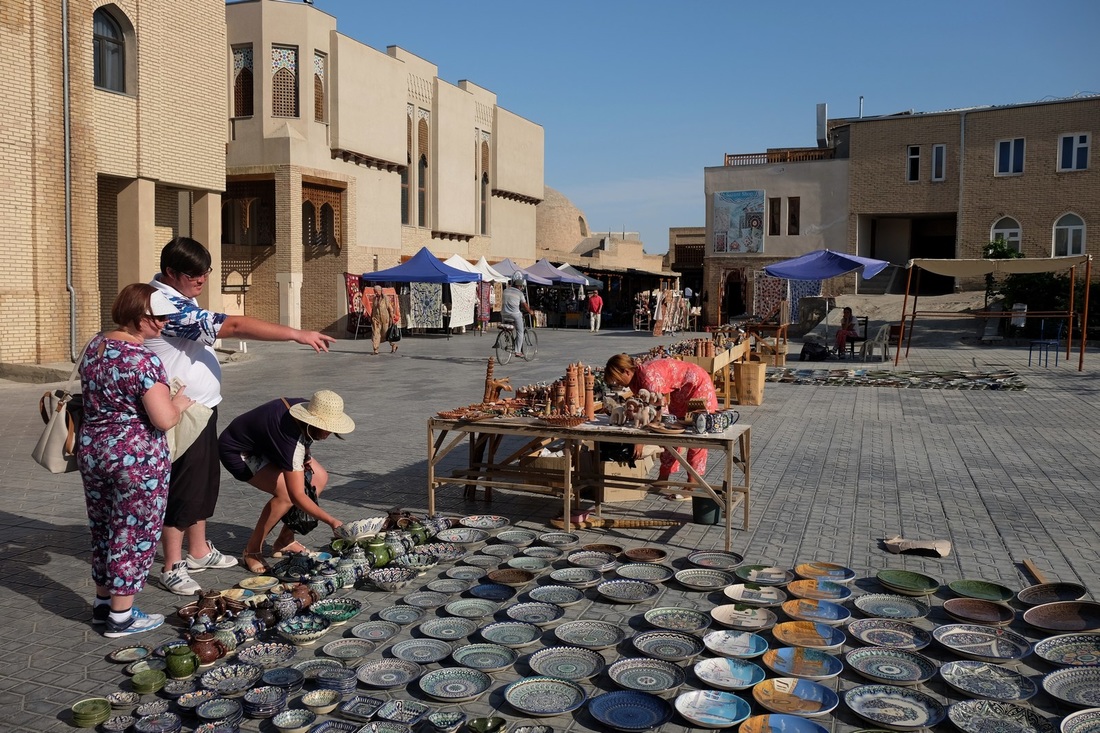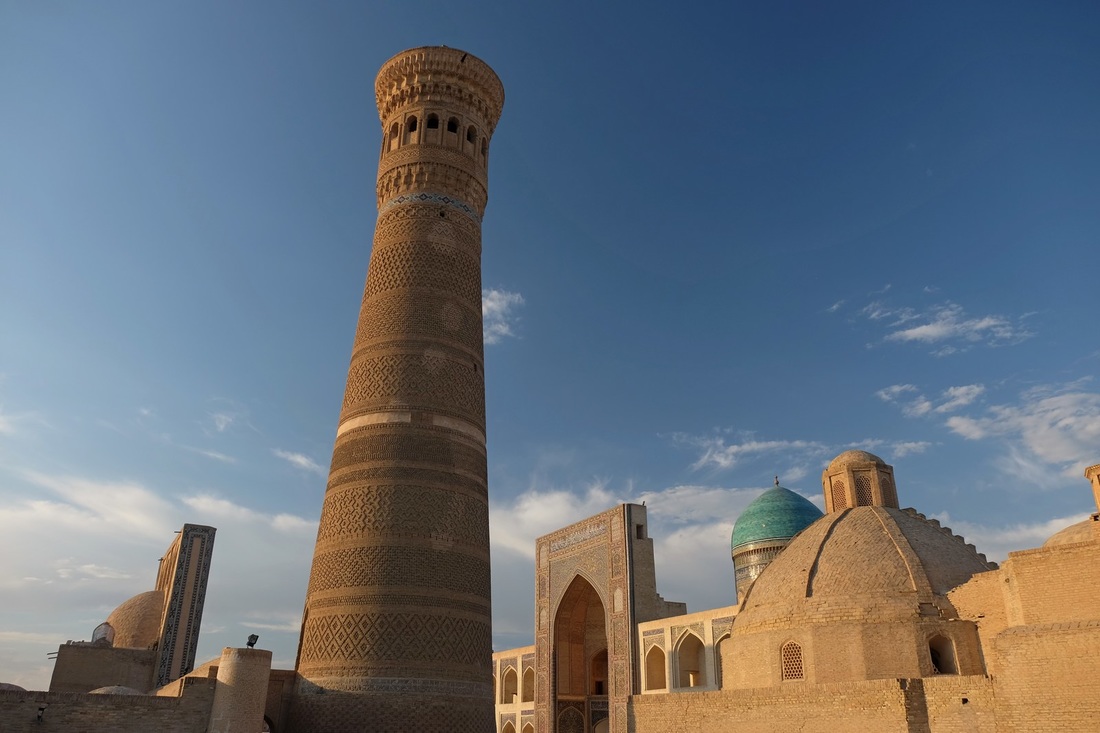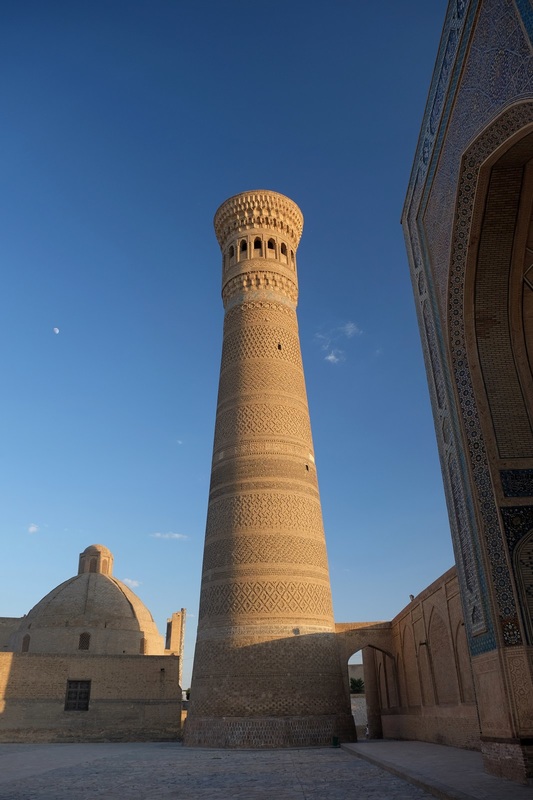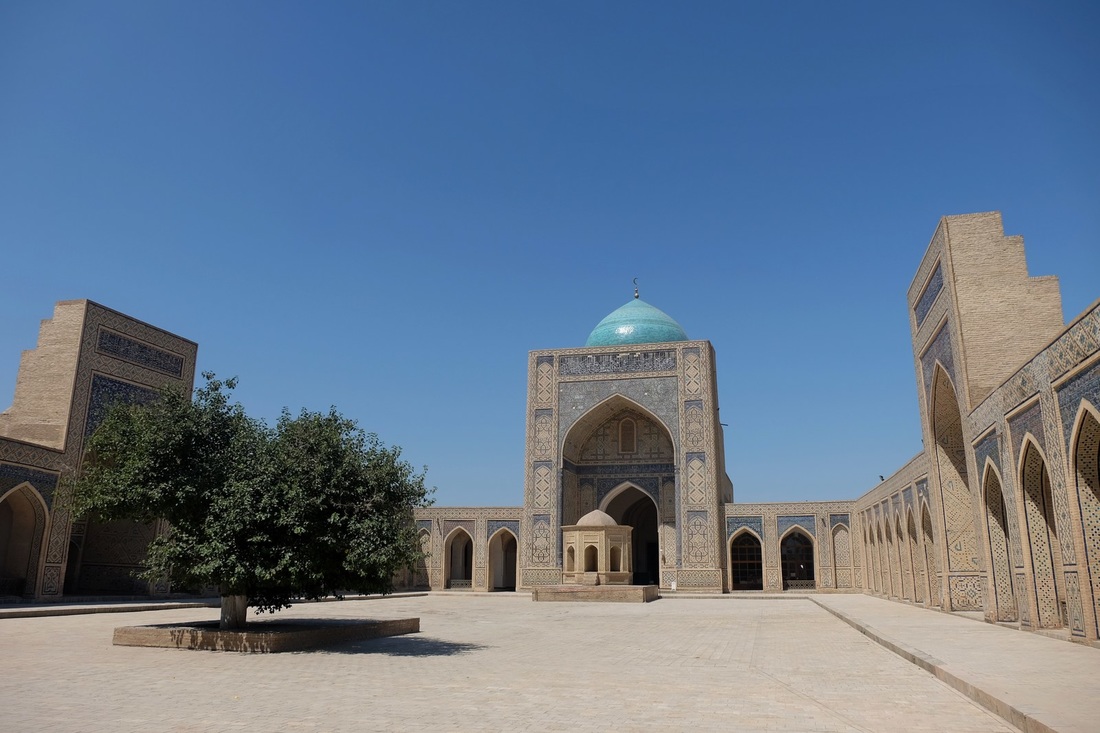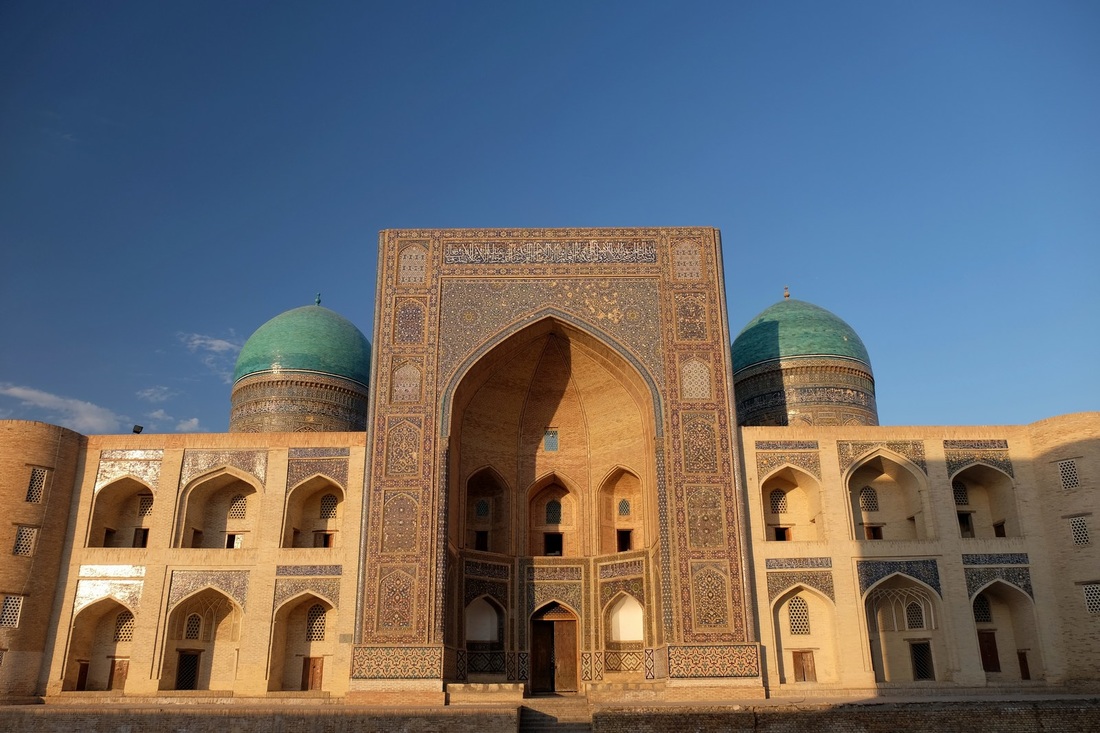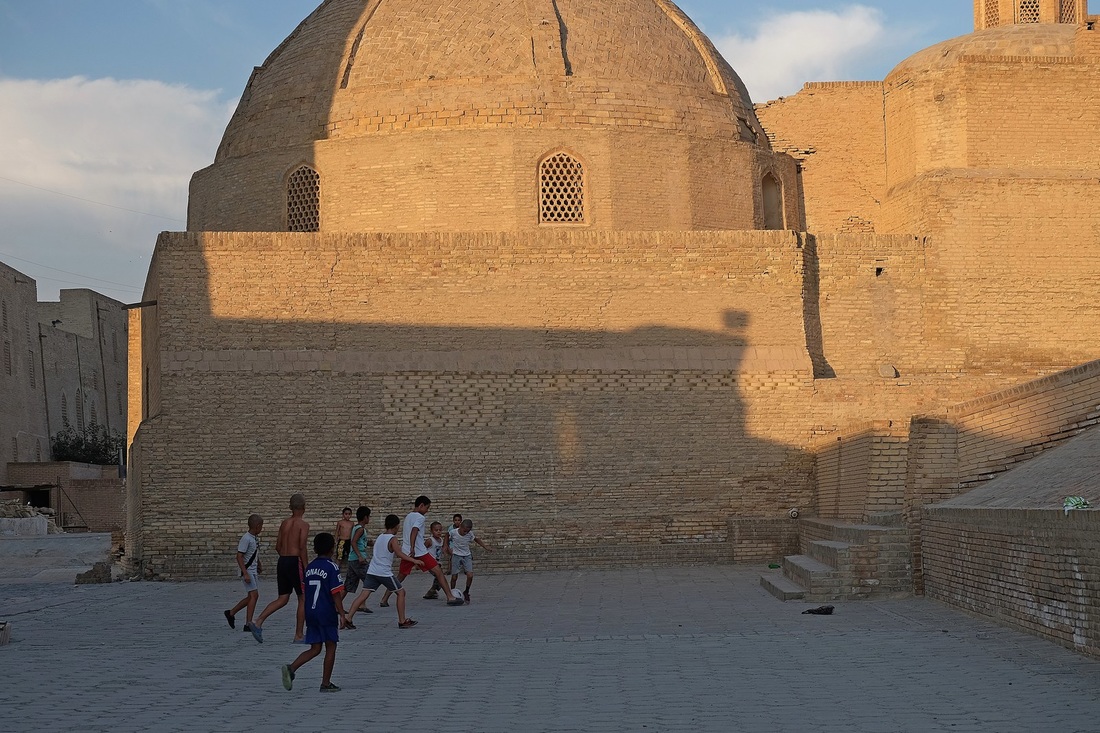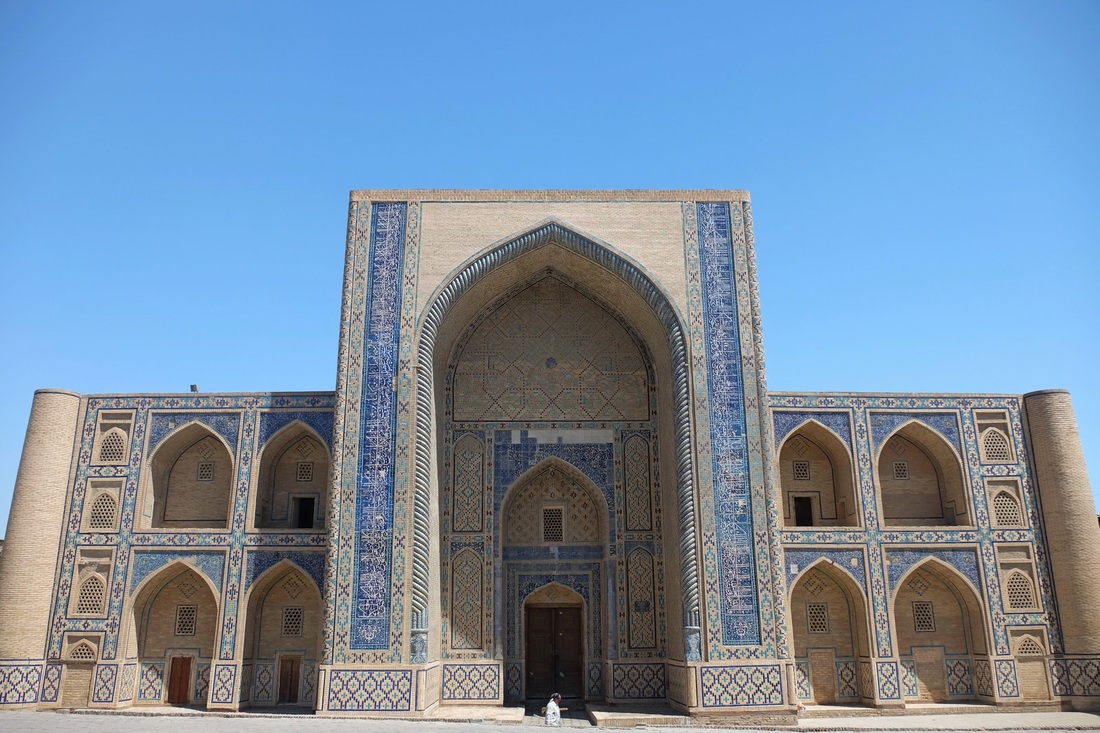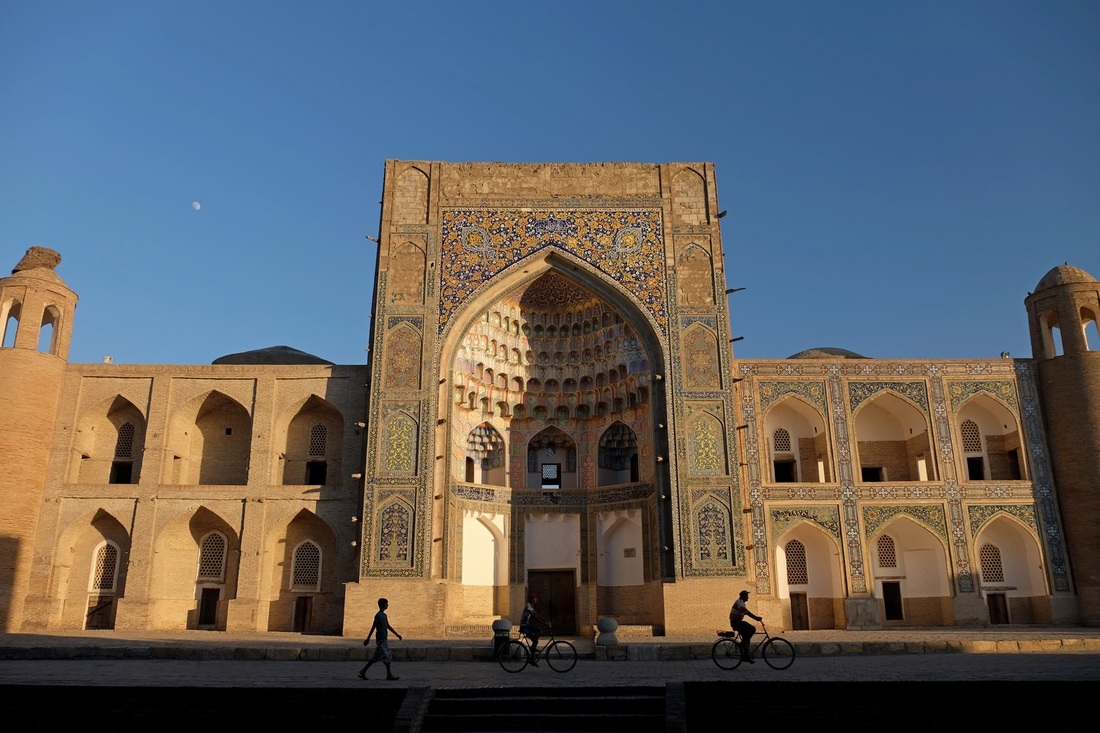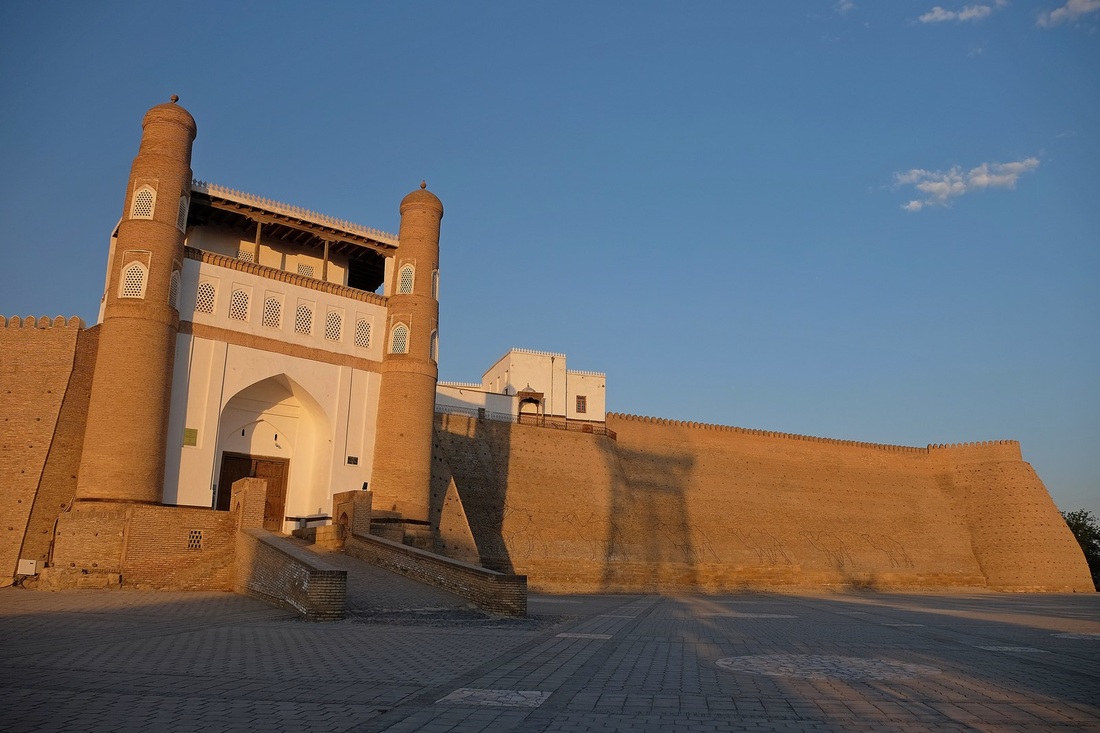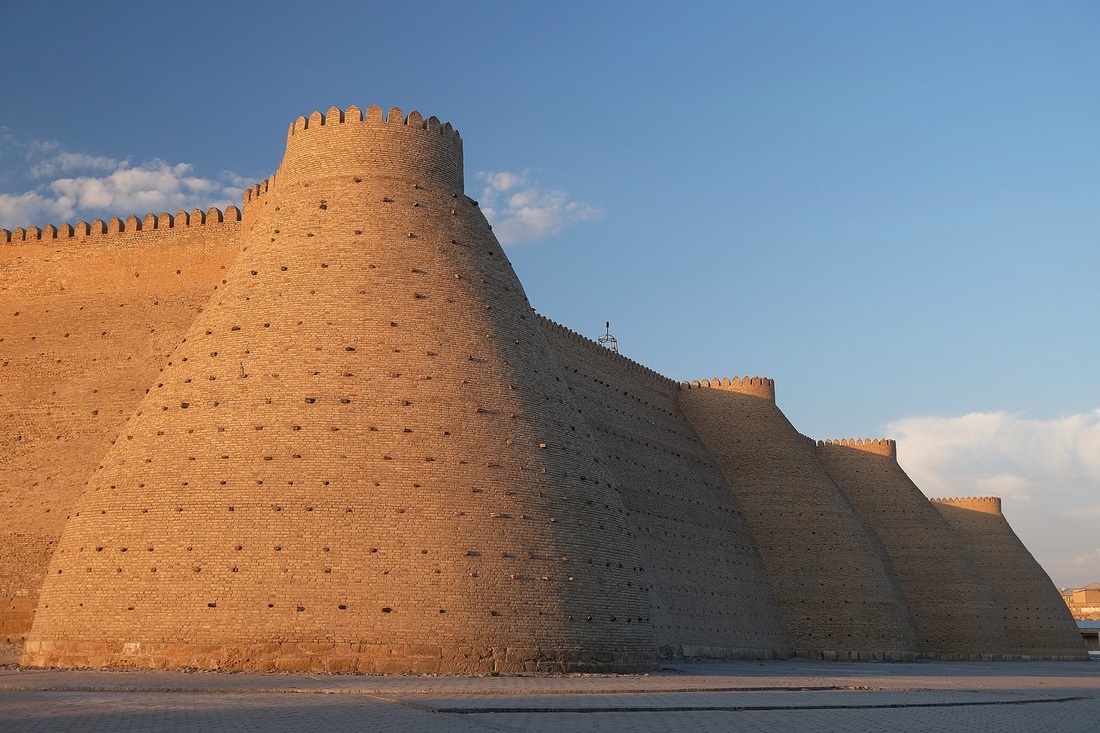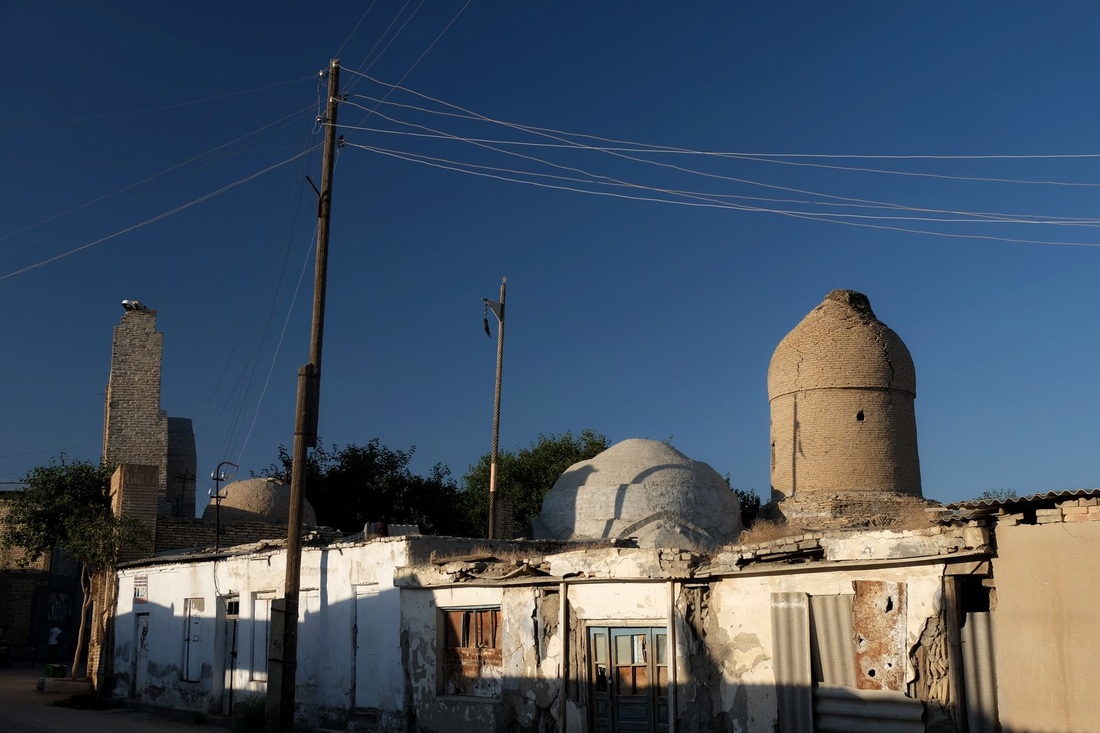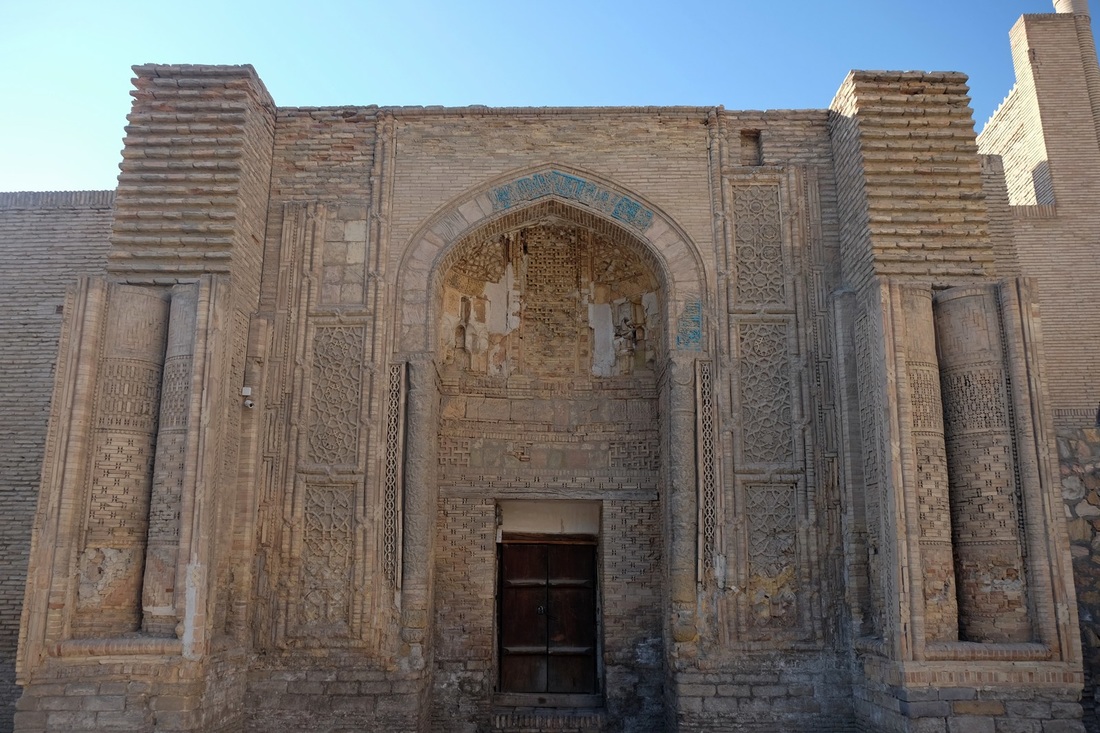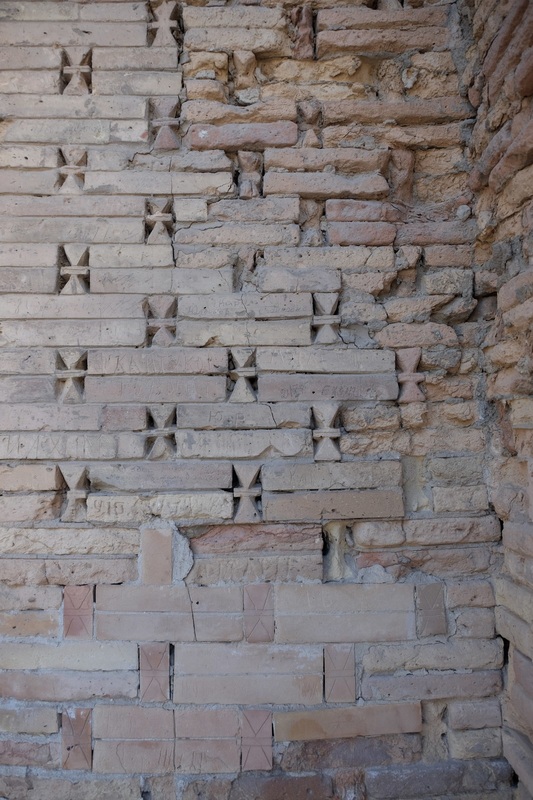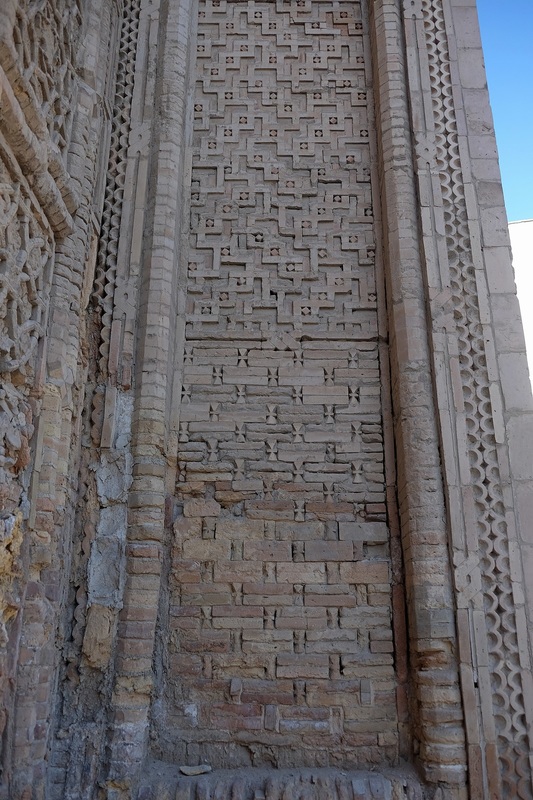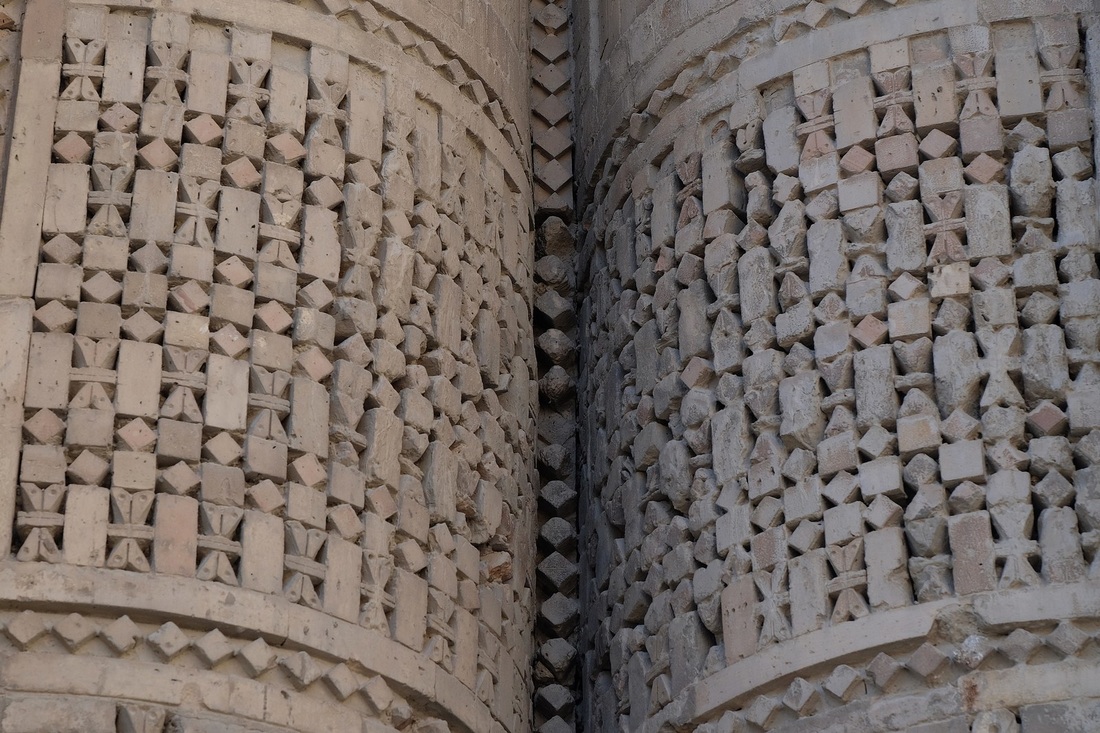Some sights, like the Kalon Mosque and Minaret area are truly awe-inspiring.
But the whole place is let-down by indiscriminate tourist exploitation.
T plus 49 - Bukhara
Don't get me wrong - this is still a very worthwhile place to visit. It's just that one gets the sense that it's been overdone. For example, they've permitted the occupation of ancient buildings for commercial purposes, and the construction of add-ons, and standalone structures in close proximity to the historical sights. I was horrified that they put a guesthouse in one of the 17th century buildings, replete with retro-fitted glass windows, air-con compressors and flashing signs. And just down the road a luxury hotel, decked-out in medressa motifs, has sprouted up opposite a 9th century mosque, the oldest surviving one in Central Asia.
And because the restoration work on many ancient sites was done (or redone) fairly recently, everything looks quite polished - too polished for my taste. The alternating mix of new and old unfortunately ensures that you're never exactly sure when the greatness ends and the grotesque begins. In the space of 10 square metres, you'll come across buildings of varying vintages - from 400 years to 4 years to as new as 4 months.
Bukhara is also, by far, the most touristy place I've come across in all of Central Asia. In fact, it's quite obvious that the "screw-the-tourist" culture is most pronounced in Uzbekistan. Unlike in Kazakhstan, or even in the much poorer Kyrgyzstan, the tourism industry here will maul you at every opportunity. From convenience stalls to taxi drivers, it seems like the accepted norm is to over-charge non-locals. Whether it's a 20% or 200% hike really depends on your negotiating prowess, and how closely you watch your back. It really does get quite irritating when you wonder to yourself "how much am I getting screwed" every time you pay for something.
Because Bukhara is a small place, all the tourist-screwing conspirators are funneled into an area no larger than 1km by 1km - where all the sights are. Therefore, hardly 10 seconds goes by before you hear the next "hello meester, where you from?", or "change money?", or the one that gets on my nerves the most - "konichiwa". Nothing against the Japanese; I just don't like being stereotyped as a camera clutching, sun glass-sporting, hiking boot-wearing asian tourist. Ironic, because that's exactly how I look! So who can blame them eh.
The over-commecialisation of Buhkara is like putting a Starbucks in the Forbidden City in Beijing. Oh damn, they've done that. Or a restaurant on the Eiffel Tower in Paris. Oh damn, there are four, actually. So I guess we have no one left to point fingers at except the very nature of capitalism itself. The Uzbek tourism industry is at a nascent stage, and is set to grow explosively with the loosening of visa requirements, lessening harassment by police and border guards etc. I just wish they had taken the opportunity of this clean-start to embark on a different path.
Ok, so some brief background before the pictures. Much of what we see in Bukhara today is the work of the Shaybanid dynasty who oversaw the construction of over 100 medressas and 300 mosques in the centre of the city in the 16th and 17th centuries. Like Samarkand, it was also a major Silk Road stop with a thousand-year history, and a UNESCO World Heritage Site. It is a really compact city, and if you like all your ancient buildings in one location, Bukhara is just the place for you. While no single building is more impressive than the ones we see in Samarkand, they work very well together as an ensemble. Perhaps the smarter way to do it is to visit Bukhara first, then Samarkand for a better build-up.
Don't get me wrong - this is still a very worthwhile place to visit. It's just that one gets the sense that it's been overdone. For example, they've permitted the occupation of ancient buildings for commercial purposes, and the construction of add-ons, and standalone structures in close proximity to the historical sights. I was horrified that they put a guesthouse in one of the 17th century buildings, replete with retro-fitted glass windows, air-con compressors and flashing signs. And just down the road a luxury hotel, decked-out in medressa motifs, has sprouted up opposite a 9th century mosque, the oldest surviving one in Central Asia.
And because the restoration work on many ancient sites was done (or redone) fairly recently, everything looks quite polished - too polished for my taste. The alternating mix of new and old unfortunately ensures that you're never exactly sure when the greatness ends and the grotesque begins. In the space of 10 square metres, you'll come across buildings of varying vintages - from 400 years to 4 years to as new as 4 months.
Bukhara is also, by far, the most touristy place I've come across in all of Central Asia. In fact, it's quite obvious that the "screw-the-tourist" culture is most pronounced in Uzbekistan. Unlike in Kazakhstan, or even in the much poorer Kyrgyzstan, the tourism industry here will maul you at every opportunity. From convenience stalls to taxi drivers, it seems like the accepted norm is to over-charge non-locals. Whether it's a 20% or 200% hike really depends on your negotiating prowess, and how closely you watch your back. It really does get quite irritating when you wonder to yourself "how much am I getting screwed" every time you pay for something.
Because Bukhara is a small place, all the tourist-screwing conspirators are funneled into an area no larger than 1km by 1km - where all the sights are. Therefore, hardly 10 seconds goes by before you hear the next "hello meester, where you from?", or "change money?", or the one that gets on my nerves the most - "konichiwa". Nothing against the Japanese; I just don't like being stereotyped as a camera clutching, sun glass-sporting, hiking boot-wearing asian tourist. Ironic, because that's exactly how I look! So who can blame them eh.
The over-commecialisation of Buhkara is like putting a Starbucks in the Forbidden City in Beijing. Oh damn, they've done that. Or a restaurant on the Eiffel Tower in Paris. Oh damn, there are four, actually. So I guess we have no one left to point fingers at except the very nature of capitalism itself. The Uzbek tourism industry is at a nascent stage, and is set to grow explosively with the loosening of visa requirements, lessening harassment by police and border guards etc. I just wish they had taken the opportunity of this clean-start to embark on a different path.
Ok, so some brief background before the pictures. Much of what we see in Bukhara today is the work of the Shaybanid dynasty who oversaw the construction of over 100 medressas and 300 mosques in the centre of the city in the 16th and 17th centuries. Like Samarkand, it was also a major Silk Road stop with a thousand-year history, and a UNESCO World Heritage Site. It is a really compact city, and if you like all your ancient buildings in one location, Bukhara is just the place for you. While no single building is more impressive than the ones we see in Samarkand, they work very well together as an ensemble. Perhaps the smarter way to do it is to visit Bukhara first, then Samarkand for a better build-up.
The Kalon Minaret - in my view Bukhara's most picturesque stucture - and the interior of the Kalon Mosque and its courtyard. The minaret may look gorgeous today, but it's got quite a sinister past. Built in 1127, it was Central Asia's tallest building (47m) at the time. It was also known as "The Tower of Death" because convicted criminals would be flung off the top!
The strikingly pretty 16th century Mir-i-Arab Medressa.
They've kinda irreversibly desecrated a 900-year old building by drawing on a goalpost on its side. But hey, everyone loves football right?
The "original" Ulugbek Medressa, built in 1417 which served as the template for other medressas which followed, including the ones in Samarkand.
And the Abdul-Aziz Khan Medressa, which was built directly opposite the Ulugbek Medressa in the 16th Century. It was built with the specific purpose of upstaging its neighbour, and I think the 100-odd years separating them allowed for the the builders of Abdul-Aziz Khan Medressa to incorporate more modern-day techniques e.g. the stalactite-adorned ceiling, which is very very pretty.
Ok, no more medressas. After a while, they all look the same!
Ok, no more medressas. After a while, they all look the same!
The Ark - official residence of Bukhara's Emir from the 17th century up till the 1920's. The structure (or some of it anyway) has existed since the 5th century when it was used as a defensive fortress over the years.
I found the slightly derelict and unrestored buildings such as this one, the Turki Jandi Mausoleum, surrounded by graves 30 levels deep, much more interesting.
Maghoki-Attar - Central Asia's oldest mosque, from the 9th century. Look at the brickwork closely. It's some of the most intricate I've seen so far.
Top close-up: "Ok, we're getting bored with laying bricks flat on top on other bricks. Let's change it up by laying some flat and some vertical, and carving "bow-ties" into the vertical ones. Just because we can."
Middle close-up: "This "bow-tie" business isn't challenging enough. Lets introduce perfectly symmetrical square and diamond shaped (not the same thing) inserts too!"
Bottom close-up: "Now let's go really nuts. Let's make a curved surface from all of the above. Yes, every brick, cube and rod has to be cut into a wedge-shape in order to fit the decreasing three dimensional circumference. Not to say that it would be extremely difficult without precision cutting tools. But lets do it anyway."
Top close-up: "Ok, we're getting bored with laying bricks flat on top on other bricks. Let's change it up by laying some flat and some vertical, and carving "bow-ties" into the vertical ones. Just because we can."
Middle close-up: "This "bow-tie" business isn't challenging enough. Lets introduce perfectly symmetrical square and diamond shaped (not the same thing) inserts too!"
Bottom close-up: "Now let's go really nuts. Let's make a curved surface from all of the above. Yes, every brick, cube and rod has to be cut into a wedge-shape in order to fit the decreasing three dimensional circumference. Not to say that it would be extremely difficult without precision cutting tools. But lets do it anyway."
